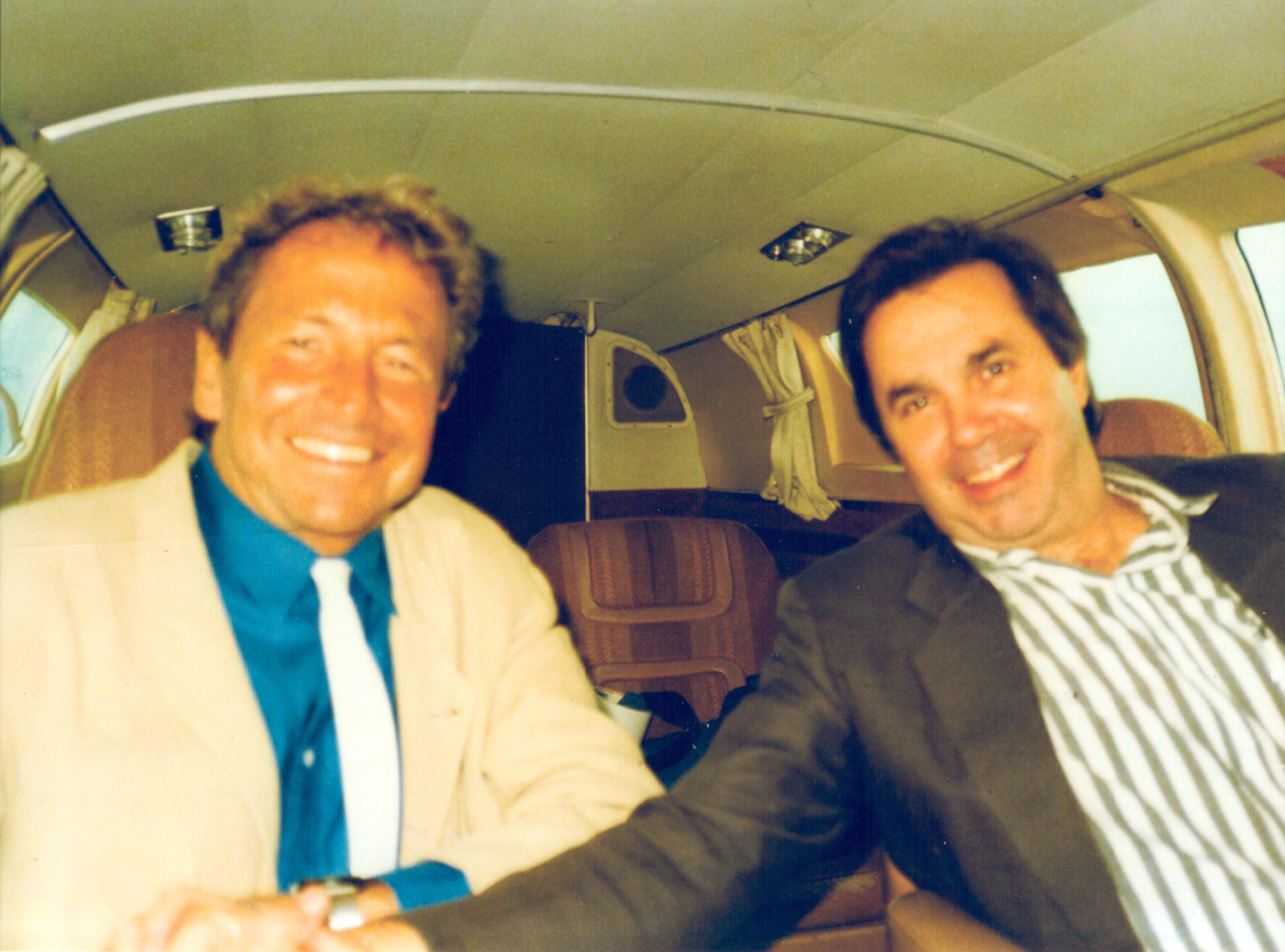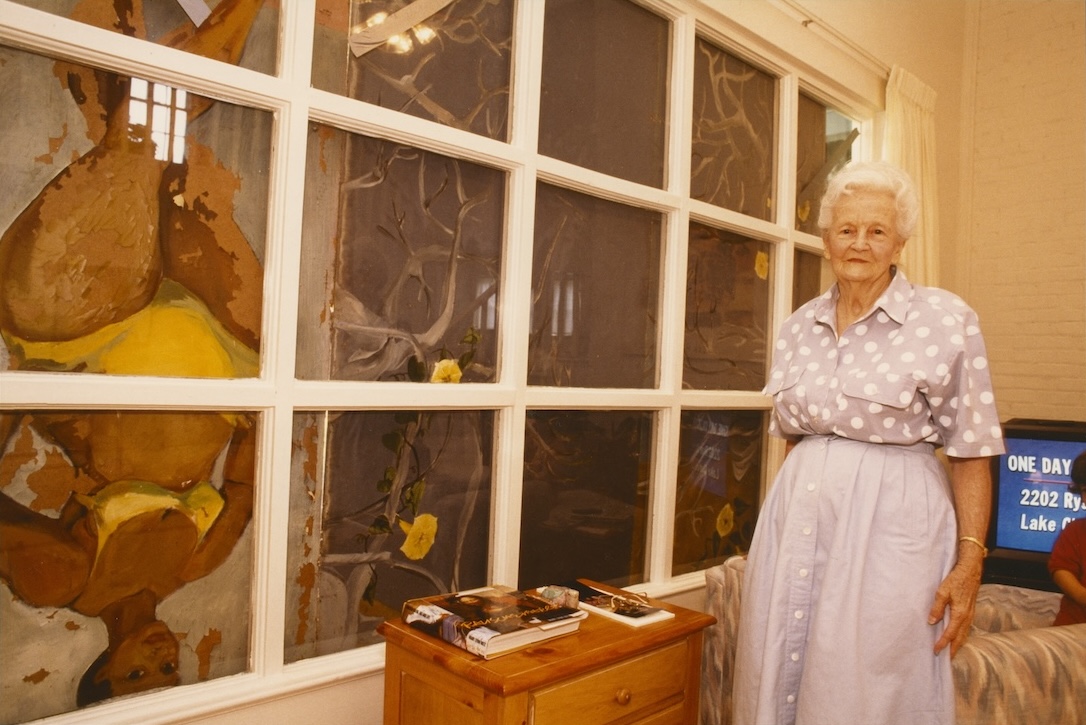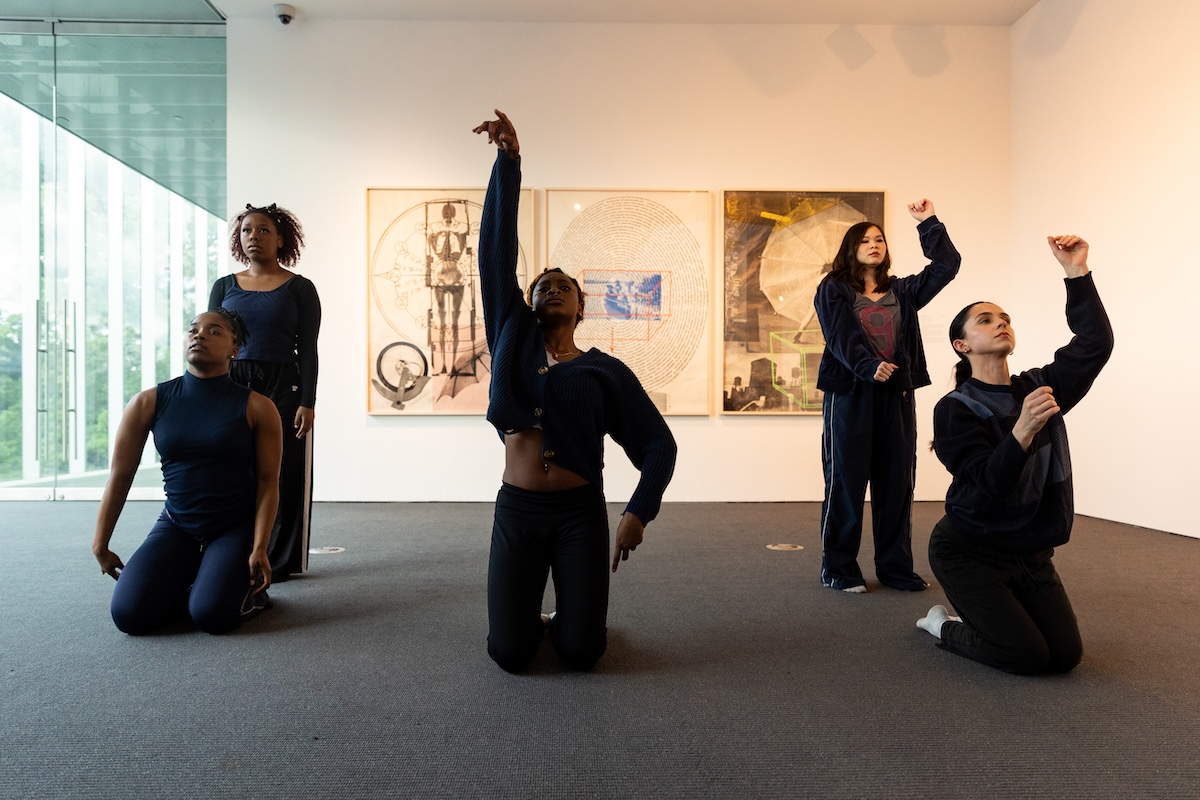More than 1,400 words spiral out from the center panel of Robert Rauschenberg's 1968 triptych "Autobiography," his abridged life story unfurling to form a magnified fingerprint. Zero in on the second ridge to the left, and you'll see it: "Family moved to Lafayette LA."
"It goes without question that Bob Rauschenberg was one of the seminal figures in American art in the second half of the 20th century," said Molly Rowe, executive director of the Hilliard Art Museum, which holds the "Autobiography" lithograph as part of its permanent collection. "If we look at what we have in our collection here, you see his legacy, which at the time, was so radical, and today is part of how we look at art."
Rauschenberg, who would have been 100 years old this Oct. 22, rose to fame as a transformational bridge between the Abstract Expressionism and Pop Art movements of the 20th century. His creative work made an indelible mark in the galleries and museums of post-war New York, eventually earning him international acclaim at the 1964 Venice Biennale. He continued making art until the day he died on May 12, 2008.
Rauschenberg spent his earliest years in Port Arthur, Texas, and his final chapters in Captiva, Florida. But each year on his mother's birthday, he came home to Lafayette.
The tug of his family never kept him tethered in his adopted hometown for very long. However, each time he visited Louisiana, he left something of himself behind. A Mardi Gras costume. A piece of art. A house.
The house still stands. As the lore goes, Rauschenberg returned to Port Arthur in the mid-1940s after an honorable discharge from the U.S. Navy, only to discover his family had already relocated to Lafayette. Undeterred, he tracked them down and with only a few months of art school under his belt, offered to design a family home on Brookside Drive in the Saint Streets neighborhood. Luckily, they said, "yes."
"At the time it was the only contemporary house in Lafayette," Janet Begneaud, long-time Lafayette realtor and only sibling of Rauschenberg said in an interview for the Robert Rauschenberg Foundation's Oral History Project in 2015. "On Sunday afternoons people would drive by and stop — not turn the motor off but pull up and really stop and look at that house…And Bob loved it."
The home's mid-century façade still stands out among the neighborhood's traditional Southern cottages. Kirstin Hebert and her husband bought the house in 2013 from Begneaud. Hebert said certain aspects of the design lean are more form than function, but the opportunity to live inside Rauschenberg's art makes it all worthwhile.
"To this day, people drive by and just stare at it," said Hebert, who has had visits from The New York Times and Smithsonian magazine since moving in.
Rauschenberg created his own homestead in New York City 20 years later, coincidentally on Lafayette Street between SoHo and the East Village. The repurposed orphanage and chapel became Rauschenberg's home and studio, where creatives gathered — including frequent visitors from Lafayette. It's now the headquarters of the Robert Rauschenberg Foundation.
"It was the place," said Lafayette Renaissance man and recent recipient of a UL Lafayette College of Arts honorary doctorate, Richard "Dickie" Landry. Landry couldn't have imagined stepping into Rauschenberg's orbit when he originally discovered the artist in the pages of Time and Life magazines. "When I turned the page and saw what Bob had done, it's like a light bulb went off in my head," said Landry, who was a senior at Cecilia High School at the time. "I can be and do whatever I want to be."
The saxophonist, painter, producer and photographer did just that. Landry recalled the first time he received an invitation to one of Rauschenberg's famous Lafayette Street gatherings, shortly after meeting him in New York in the late 1960s.

"I called Bob up, and he said, 'What are you doing, right now?' I said, 'I'm talking to you.' He said, 'No, get over here. We're having a party,'" said Landry. "So I went, and there was a raging party, and we soon became great friends, and I started playing at his openings in Europe and in New York."
Landry said he asked to borrow a camera upon leaving the party, and Rauschenberg wondered aloud if he should trust him with it. Landry recalled that after a brief pause, Rauschenberg shrugged and said, "Oh, but you're from Lafayette, you're OK."
Landry and his saxophone became regulars at the Leo Castelli Gallery, which exhibited Rauschenberg's work. Landry has fond memories of playing melodies to complement Rauschenberg's visual art. Throughout the years, the two friends zig zagged between the rural South of their youths and the vibrant art scene of Manhattan and beyond, leaving a trail of creativity in their wake.
In Landry's downtown Lafayette loft, Rauschenberg relics pay homage to these memories and his influence: a record for the Talking Heads (that earned Rauschenberg a GRAMMY), posters from their global travels for Rauschenberg's ROCI exhibitions (scribbled across, in all caps, "To Dicky"), and in a small square frame, an abstract design made from Rauschenberg's ashes.
"So, Bob is in the house," said Landry. "I go up and touch it every once in a while."
Janet Begneaud shared in an interview for the Robert Rauschenberg Foundation that her brother's artwork wasn't always as revered among his family. Their mother once dug two of Rauschenberg's panel paintings out of her closet to board their home's front window in preparation for Hurricane Andrew. "Don't worry, I didn't turn them out," Begneaud remembered her mother saying to her then-famous son.

Rauschenberg installed another more conceptual piece, "Baton Blanche (Cardboard)," in the Begneaud family dining room in the '70s. The artist crafted the piece for his sister as part of a series. The siblings scavenged Lafayette for supplies, including scrap plywood from Doug Ashy and discarded cardboard boxes from Our Lady of Lourdes Hospital. Rick Begneaud, Janet's son, remembers the piece being a conversation starter in their Greenbriar home, until his father had enough.
"Well, at some point, probably in the early '80s, my dad comes to me and goes, 'listen, take that thing off the wall. I don't care what you do with it,'" said Rick Begneaud.
Begneaud sold and delivered the piece back to his uncle for $12,000, pocketed the cash and didn't see it again until a 1997 Rauschenberg retrospective at the Guggenheim Museum. "You've got to see this," he remembers telling his mother, who was also attending the show.
Later that evening, he shared the unlikely story to Christophe de Menil, who looked at him and said, "The Menil Collection just bought that." When he asked how much she paid for it, he remembers her reply: "I think it was $1.9 million.'"
The next year, Rauschenberg visited Lafayette en route to another retrospective. This one spanned the Menil Collection, Contemporary Arts Museum and the Museum of Fine Arts in Houston. In honor of the exhibition, Janet Begneaud hosted a celebration, which had an outsized impact on the future of the UL Lafayette College of the Arts. Professor Brian Kelly, head of the UL Lafayette printmaking program and coordinator of Marais Press, said the dean of the College of the Arts and University administrators attended the gathering and Houston exhibition. During that time, Rauschenberg offered the University prescient guidance on moving the College of the Arts, and in particular, the printmaking program forward.
"I think he clearly articulated — from someone of his stature and for someone who is a practitioner of the process — how it changed him and his career," said Kelly. "They came back and initiated a national search for a print maker. That conversation and timing were very important."
Kelly, who has led the printmaking program for more than 25 years, said Rauschenberg's influence can't be overstated. As a pioneer of the print renaissance, he paved the way for fine art printing and "redefined the scale of what a print can be."
"He was one of the first to really embrace lithography and printmaking as a mechanism to bring disciplines together and really work within a process of print, as a hub for other art forms," said Kelly. "Others follow in those footsteps."
Perhaps Rauschenberg's final and most prominent gift to Lafayette in his lifetime was an exhibition at the Hilliard Art Museum in May 2005, a year after the grand opening of its new facility in 2004.
Janet Begneaud helped to orchestrate her brother's homecoming show, "Robert Rauschenberg: Scenarios and Short Stories," as part of her commitment to the University museum and longstanding efforts to support the arts in Lafayette. Crowds gathered from near and far to witness the work of one of Lafayette's most prominent honorary citizens.
Landry still remembers playing his saxophone in front of each one of Rauschenberg's pieces displayed in the Hilliard's main gallery, just like he did in the New York gallery decades earlier. When he got to the last piece, he was so moved, he burst into tears.
"It all connected," said Landry. "Bob was the man."
Top photo caption: UL Lafayette dance students perform in front of Rauschenberg’s “Autobiography” at the Hilliard Art Museum. The lithograph is part of the museum’s permanent collection. Photo credit: Paul Kieu / University of Louisiana at Lafayette.
This piece was produced in partnership with The Current, Lafayette's community voice. The video about Richard "Dickie" Landry was produced by the Hilliard Art Museum.
